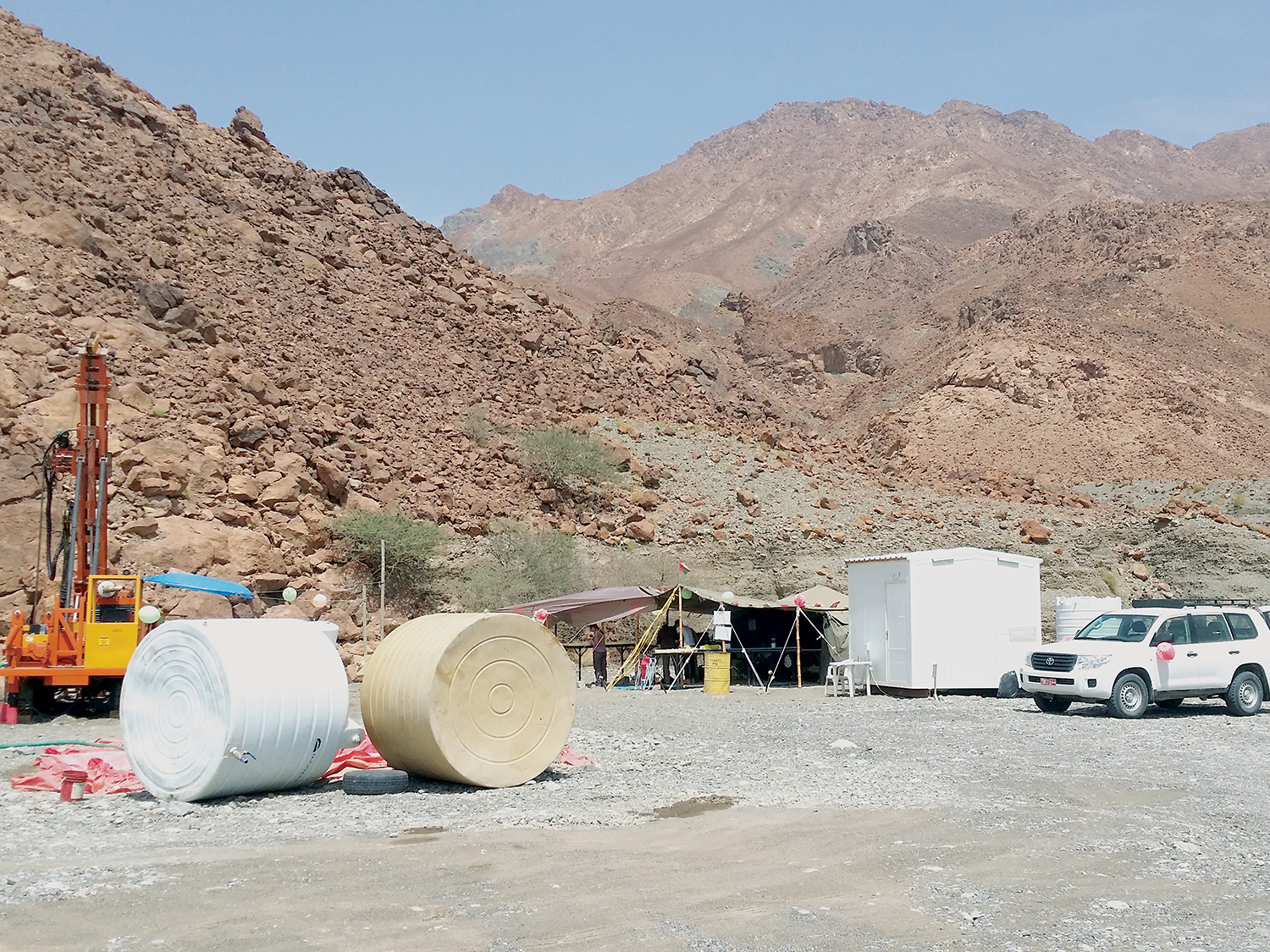


By Lakshmi Kothaneth — MUSCAT: March 25 - The latest scientific drilling by the Oman Drilling Project at Wadi Manasah in the Wilayat of Bidbid has ended the season with a collection of samples from 300-metre cored hole that is expected to throw more light on oceanic plates and most interestingly on the microbial ecosystem in extreme environments. This is one of the eight holes that will be drilled during 2016 to 2018.
Dr Peter Kelemen, one of the lead project proponents who is from Columbia University, explained by pointing across the wadi and the mountains, “The red rocks you see in the background are part of the earth’s mantle that was thrust onto the Arabian Continent and as it came onto the Arabian Continent, carbon dioxide and other things from the sediments beneath percolated up into the bottom of the mantle and converted these rocks to what they are now — the Co2 from the sediments is now incorporated in solid carbonate minerals.”
The first 70 metres of the study of total 300 metres where the red rocks that is visible and then the team drilled unaltered rocks from the earth’s interior.

But during this project we are not doing any research or experiments on engineered carbon dioxide capture and storage. On the other hand, we hope that someday, somewhere people might try this because it could offer a helpful part of the solution to the climate change problem,” explained Dr Kelemen.
Scientists from 11 countries are participating in the study and 133 scientists signed up to participate and are all involved in different ways.
One large group of the scientists is interested in the subsurface biosphere.
There are microbial organisms that live in the subsurface and unlike on the surface where the bottom of the food chain is photosynthesis, which is the energy from the sun, the bottom of the food chain for the subsurface biosphere is chemosynthesis — they are microbes that basically eat rocks and in turn supports a varied ecosystem underground.
Some of the samples collected (the archive half) will remain in Oman and the working half will be at the Museum of Natural History in New York City, where any scientist from anywhere in the world can request for samples to study.
The studies had revealed an unexpected reservoir of carbon derived from subducted sediments and precipitated as carbonate minerals in the mantle wedge. This they believe could form an important so far unrecognised part of the global carbon cycle.
Oman Observer is now on the WhatsApp channel. Click here



